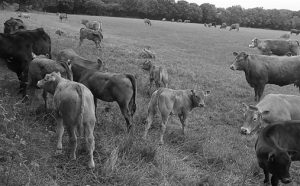
While Defra hold on to a now disproven view that badger culling is needed for control of bTB in cattle, there remain important omissions, contradictions & unanswered questions in their approach to the current management policy.
For a start, the management of Bovine TB (bTB) is still plagued by the inaccuracies of currently used tests and testing systems. Importantly, none of the primary tests currently used can identify the presence of live Mycobacteria which is core to the central dogma of bacterial diagnosis developed by Robert Koch, one of the main founders of modern bacteriology. He discovered the causative organisms of anthrax (1877), septicæmia, tuberculosis (1882) and cholera (1884). Koch’s dogma or principle, specifies that definitive diagnosis is dependent on the identification of the presence of the infectious organism.
There are major concerns about elements of the front-line bTB tuberculin skin-test. Firstly, it misses a substantial proportion of infected animals, thus allowing undetected infection to circulate in and between herds. Secondly, repeated injection with the tuberculin injection used for the skin test may potentially render an animal skin-test positive, despite there never having been any infection. Thirdly, the implementation of the skin-test is laborious and time-consuming, and requires multiple visits to the farm by a vet, hence while it creates work for vets, it is expensive.
In Human TB (hTB) the basic biology is similar. Recently, however, the human TB clinical fraternity have become increasingly concerned about the TB skin-test. In fact the concern has been such that the Centres for Disease Control (CDC), based in the US, now recommends the use of the TB blood tests (IGRAs), such as QFT-Plus (similar to Bovigam) over the TB skin test (TST) for most risk groups.
To illustrate the importance of this change of approach, clinical studies on the phage-based test ‘Actiphage’ have shown for the first time that live bacteria can be detected in the blood of people with incipient TB infection, including contacts of infected patients. This success was mirrored by the data produced by vet Dick Sibley at Gatcombe who used Actiphage and Bovigam (gamma interferon) to effectively eradicate bTB from the farm on two occasions. Those studies showed clearly that the best way to identify infected animals was the combined use of Bovigam and Actiphage, and not skin-testing. They indicated very strongly that the biggest problem in the eradication of bTB is the inability of skin-testing to identify infected carriers which actually maintain the infectious burden within the herd. They also imply that there is no significant involvement of external non-bovine hosts in the propagation of the disease.
So, the questions we would like to put to George Eustice and DEFRA are:
1) Why have you not implemented a controlled trial on the efficacy of different testing strategies for Bovine TB?
2) Why will you not take note of the human TB data? This clearly shows that identification of the live bacteria is the critical key to controlling this disease.
3) When will you recognise that all the data from both bovine and human TB indicates that there is no justifiable scientific rationale for the involvement of an external host to maintain persistent infection in the herd?

